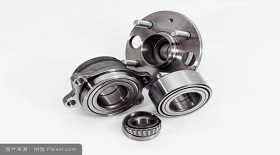Advantages of spring clutch
The installation direction of the diaphragm spring in the pull-type diaphragm spring clutch is opposite to the traditional push-type structure, and the support point is moved near the large end of the diaphragm spring. When combined, the large end of the diaphragm spring is supported on the clutch cover, the middle part is pressed on the pressure plate, and the separation bearing is pulled out from the flywheel to realize the separation of the clutch.
Compared with push-type, pull-type diaphragm spring clutch has many advantages: eliminating all parts of intermediate support, without supporting ring or using only one supporting ring, making its structure simpler, compact, fewer parts and less mass, and pull-type diaphragm spring can be used under the condition that the middle part and pressure plate are pressed in the same size of pressure plate. The diaphragm spring with larger diaphragm diameter improves the ability of pressing force and transferring torque, and does not increase pedal force. When transferring the same torque, a smaller size structure can be adopted. Under the condition of engagement or separation, the deformation of clutch cover is small, the stiffness is large, and the separation efficiency is higher. The pull-type lever ratio is larger than the push-type lever. Compared with the push-type, the pull-type pedal force can be reduced by less friction loss, higher transmission efficiency, lighter pedal manipulation, and the pull-type pedal force is less than the push-type pedal force. Whether in the engagement or separation state, the large end of the diaphragm spring of the pull-type structure keeps contact with the support of the clutch cover, and there will be no gap after the wear of the support ring. Increasing the pedal free travel will not cause impact and will last longer.
Hydraulic Exhibition opened. I am looking forward to your arrival.



